On the Same Page
Reader’s Guide
Winnie-the-Pooh
► A. A. Milne
► Favorite A. A. Milne Quotes
► Discussion Questions
A. A. Milne
(January 18, 1882 – January 31, 1956)
Life
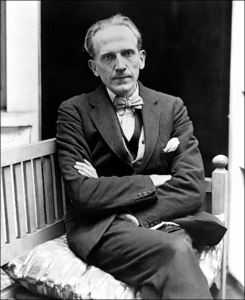 Alan Alexander Milne was born in London to Sarah Marie Heginbotham and John Vine Milne, who ran a small independent school called Henley House. H. G. Wells was among the teachers at the school. Milne later attended Westminster School and Trinity College, Cambridge on a mathematics scholarship. While at Cambridge, he wrote and edited a student magazine, Granta, often writing with his brother Kenneth under the initials AKM. His work there drew the attention of Punch magazine where he contributed and eventually became assistant editor.
Alan Alexander Milne was born in London to Sarah Marie Heginbotham and John Vine Milne, who ran a small independent school called Henley House. H. G. Wells was among the teachers at the school. Milne later attended Westminster School and Trinity College, Cambridge on a mathematics scholarship. While at Cambridge, he wrote and edited a student magazine, Granta, often writing with his brother Kenneth under the initials AKM. His work there drew the attention of Punch magazine where he contributed and eventually became assistant editor.
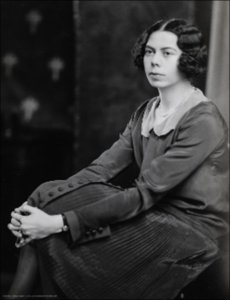 In 1913, Alan married Dorothy “Daphne” de Selincourt.
In 1913, Alan married Dorothy “Daphne” de Selincourt.
He joined the army in World War I and eventually gained the rank of lieutenant. He was injured during the Battle of the Somme and sent back to England. After recuperating, Milne was brought back as a military intelligence officer tasked with writing propaganda articles.
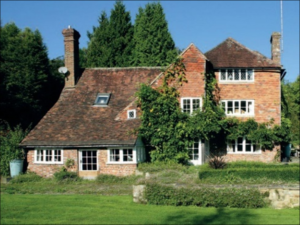 In 1920, the Milne’s only child, Christopher Robin was born. In 1925, the family bought a second home, Cotchford Farm, in East Sussex on the northern border of Ashdown Forest.
In 1920, the Milne’s only child, Christopher Robin was born. In 1925, the family bought a second home, Cotchford Farm, in East Sussex on the northern border of Ashdown Forest.
During World War II, Milne was a captain in the British Home Guard.
He retired to Cotchford farm as an invalid after a stroke and brain surgery in 1952 and died in 1956 at the age of 74.
Career
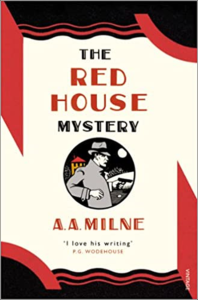 Alan joined the staff of Punch in 1906. During this period, he also published 18 plays and three novels including the still read Red House Mystery. He began writing children’s poetry after his son was born and published a collection, When We Were Very Young in 1924, which was illustrated by one of Punch’s staff cartoonists, E. H. Shepard. A collection of children’s short stories, A Gallery of Children,
Alan joined the staff of Punch in 1906. During this period, he also published 18 plays and three novels including the still read Red House Mystery. He began writing children’s poetry after his son was born and published a collection, When We Were Very Young in 1924, which was illustrated by one of Punch’s staff cartoonists, E. H. Shepard. A collection of children’s short stories, A Gallery of Children, 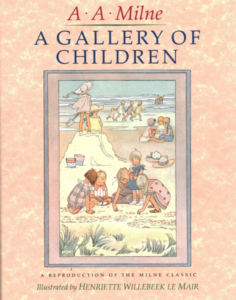 followed in 1925. Milne was also an early screenwriter with dozens of titles to his credit. Looking back at this time, Milne said that, “When he told his agent that he was going to write a detective story, he was told that what the country wanted from a ‘Punch humorist’ was a humorous story; when two years later he said he was writing nursery rhymes, his agent and publisher were convinced that he should write another detective story; and after another two years, he was being told that writing a detective story would be in the worst of taste given the demand for children’s books.” Milne wrote in all genres and was successful in each new endeavor.
followed in 1925. Milne was also an early screenwriter with dozens of titles to his credit. Looking back at this time, Milne said that, “When he told his agent that he was going to write a detective story, he was told that what the country wanted from a ‘Punch humorist’ was a humorous story; when two years later he said he was writing nursery rhymes, his agent and publisher were convinced that he should write another detective story; and after another two years, he was being told that writing a detective story would be in the worst of taste given the demand for children’s books.” Milne wrote in all genres and was successful in each new endeavor.
Today, his best known works are the duo Winnie-the-Pooh and A House at Pooh Corner which were written for his son and featured adventures of Christopher’s beloved toys.
By the 1930’s, Winnie-the-Pooh had become an annoyance to Milne as it overshadowed his other work. Up until Pooh, he felt very open creatively and the public seemed to embrace any literary direction he felt like exploring. He was also concerned by the spotlight on his son and felt “amazement and disgust” over Christopher’s continual exposure. 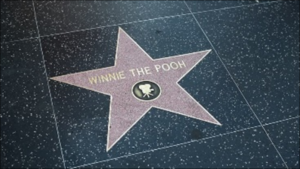 “Christopher Robin has already had more publicity than I want for him. I do not want CR Milne to ever wish that his name were Charles Robert.” He stopped writing children’s books all together. Milne and his wife became estranged from their son who felt that they had exploited his childhood.
“Christopher Robin has already had more publicity than I want for him. I do not want CR Milne to ever wish that his name were Charles Robert.” He stopped writing children’s books all together. Milne and his wife became estranged from their son who felt that they had exploited his childhood.
Winnie-the-Pooh has a star on the Hollywood Walk of Fame and came in at number seven in BBC’s 2003 poll of the best loved novels of all time.
Christopher Robin
(August 21, 1920 – April 20, 1996)
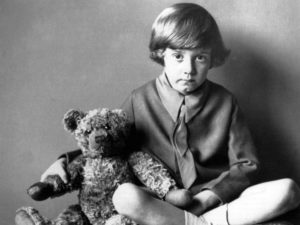 Christopher Milne was the only child of Alan and Daphne Milne. Thinking originally that he would be a girl, they easily settled on the name Rosemary. When they decided a boy name might be needed, each parent chose a name without consulting the other and put them together to become Christopher Robin. He was frequently called by his nickname, Billy Moon. Billy was a name his father had considered, and Moon was due to a childhood mispronunciation of Milne. As he grew, he was simply known as Christopher.
Christopher Milne was the only child of Alan and Daphne Milne. Thinking originally that he would be a girl, they easily settled on the name Rosemary. When they decided a boy name might be needed, each parent chose a name without consulting the other and put them together to become Christopher Robin. He was frequently called by his nickname, Billy Moon. Billy was a name his father had considered, and Moon was due to a childhood mispronunciation of Milne. As he grew, he was simply known as Christopher.
Christopher’s early childhood friend, Anne Darlington,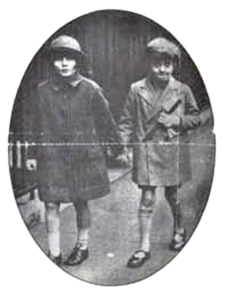 in many ways filled the role of the daughter they never had. Several of Alan Milne’s poems were written for her, and she often seemed, at least to Christopher, to be many of the things he was not. His parents always hoped that Christopher and Anne would marry.
in many ways filled the role of the daughter they never had. Several of Alan Milne’s poems were written for her, and she often seemed, at least to Christopher, to be many of the things he was not. His parents always hoped that Christopher and Anne would marry.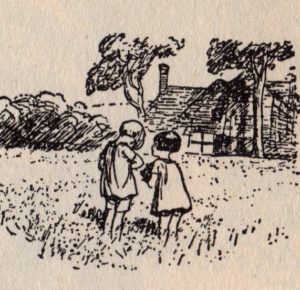
When Christopher’s father bought Cotchford Farm, the family spent weekends and summer holidays exploring nearby Ashdown Forest.
For the first nine years of his life, Christopher Milne was under the constant care of his nanny, Olive Brockwell, whom he called Nou. Milne said, “I love my Nanny, I loved Cotchford. I also quite like being Christopher Robin and being famous.”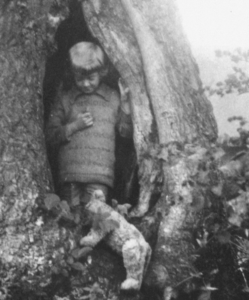
At age nine, Brockwell left, and Cristopher became more attached to his father. However, the attitude towards the elder Milne’s stories quickly changed when he was sent to board at Boxgrove School. Due to his notoriety and mild manners, he became a target of bullying. When he received a scholarship for mathematics at Stew School, the bullying was relentless. He eventually came to feel “almost that my father had got where he was by climbing upon my infant shoulders, that he had filched from me my good name and had left me with the empty fame of being his son.”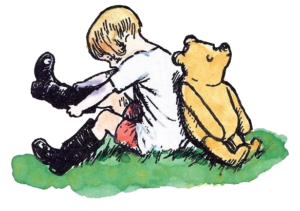
During World War II, Christopher attempted to join the army but failed the physical examination. His father used influence to get him a position in a Royal Engineer battalion in the Middle East and Italy. After being wounded, he returned to Trinity College to complete a degree in English literature.
 In 1948, Christopher married Lesley de Selincourt, a cousin on his mother’s side and they opened a successful bookshop in Dartmouth. Daphne Milne had not been on speaking terms with Lesley’s parents for thirty years, and his choice widened the rift between them.
In 1948, Christopher married Lesley de Selincourt, a cousin on his mother’s side and they opened a successful bookshop in Dartmouth. Daphne Milne had not been on speaking terms with Lesley’s parents for thirty years, and his choice widened the rift between them.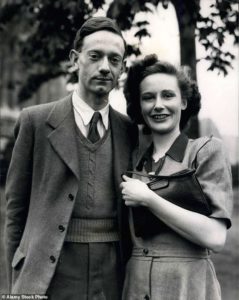
Christopher visited his father when Alan became ill, but after his father’s death, he never returned to Cotchford Farm and wanted none of the royalties from the books. His mother sold the farm and disposed of all of Alan’s personal belongings. She and Christopher had little contact later in life. In fact, they did not see each other during the last fifteen years of her life, and Daphne refused to see him on her death bed.
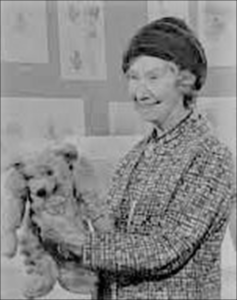 Christopher Milne eventually wrote his memoirs, The Enchanted Places. He said that the writing experience, “combined to lift me from under the shadow of my father and of Christopher Robin, and to my surprise and pleasure, I found myself standing beside them in the sunshine able to look them both in the eye. ” The memoir was dedicated to Olive Brockwell.
Christopher Milne eventually wrote his memoirs, The Enchanted Places. He said that the writing experience, “combined to lift me from under the shadow of my father and of Christopher Robin, and to my surprise and pleasure, I found myself standing beside them in the sunshine able to look them both in the eye. ” The memoir was dedicated to Olive Brockwell.
E. H. Shepard
(December 10, 1879 – March 24, 1976)
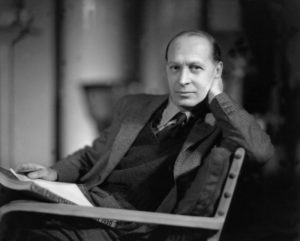 London born Ernest Howard Shepard was an artist and book illustrator. While he is especially known for the whimsical illustrations of The Wind in the Willows and Winnie-the-Pooh, it was a small fraction of his creative output and one he eventually came to resent as he felt it overshadowed his more serious work.
London born Ernest Howard Shepard was an artist and book illustrator. While he is especially known for the whimsical illustrations of The Wind in the Willows and Winnie-the-Pooh, it was a small fraction of his creative output and one he eventually came to resent as he felt it overshadowed his more serious work.
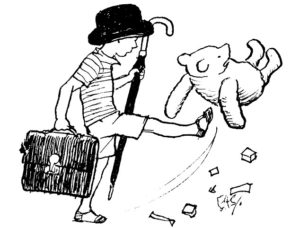 Shepard demonstrated early talent in drawing and was trained in the Heatherly School of Fine Arts and the Royal Academy, winning numerous prizes. He met Florence Eleanor Chaplin at the latter, and they were married in 1904. The artistic couple had two children, Graham and Mary, both of which became illustrators. Mary is probably the better known having illustrated the Mary Poppins books.
Shepard demonstrated early talent in drawing and was trained in the Heatherly School of Fine Arts and the Royal Academy, winning numerous prizes. He met Florence Eleanor Chaplin at the latter, and they were married in 1904. The artistic couple had two children, Graham and Mary, both of which became illustrators. Mary is probably the better known having illustrated the Mary Poppins books.
By 1906, Shepard had become a cartoonist for Punch Magazine, a successful illustrator, and had his more serious painting featured in many exhibitions.
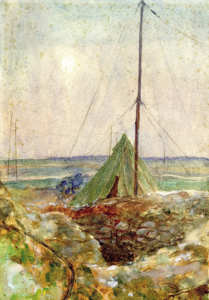 When World War I broke out, he joined as a second lieutenant in the Royal Artillery but was eventually recruited for the Intelligence Department creating sketches of battlefields. July 1, 1917, he was awarded the Military Cross by King George V in Buckingham Palace for:
When World War I broke out, he joined as a second lieutenant in the Royal Artillery but was eventually recruited for the Intelligence Department creating sketches of battlefields. July 1, 1917, he was awarded the Military Cross by King George V in Buckingham Palace for:
Conspicuous gallantry and devotion to duty. As forward Observation Office he continued to observe and send back valuable information, in spite of heavy shell and machine gun fire. His courage and coolness were conspicuous.
Throughout the war, he continued to contribute to Punch, where he eventually became lead cartoonist.
Shepard illustrated all of fellow Punch staffer Milne’s children’s books. Milne recognized that much of Winnie-the-Pooh’s success was due to the illustrations and insisted that Shepard shared in the royalties.
Shepard was knighted in 1972.
Punch Magazine
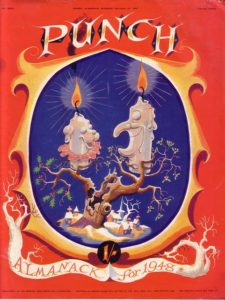 Punch or The London Charivari was a weekly magazine focused on humor and satire. The term “charivari” refers to the European folk custom of a mocking parade featuring discordant music. The magazine’s cover often featured a representation of the character Punch of the Punch and Judy puppet shows. Punch was founded in 1841
Punch or The London Charivari was a weekly magazine focused on humor and satire. The term “charivari” refers to the European folk custom of a mocking parade featuring discordant music. The magazine’s cover often featured a representation of the character Punch of the Punch and Judy puppet shows. Punch was founded in 1841 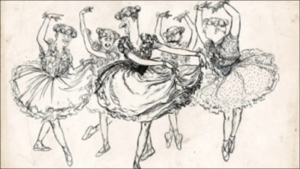 by Henry Mayhew and Ebenezer Landells. It was highly influential and helped coin the term “cartoon” for a humorous drawing. After reaching a height of popularity in the 1940s, the magazine began to decline and reached its ultimate end in 2002.
by Henry Mayhew and Ebenezer Landells. It was highly influential and helped coin the term “cartoon” for a humorous drawing. After reaching a height of popularity in the 1940s, the magazine began to decline and reached its ultimate end in 2002.
The Hundred Acre Wood
 The Hundred Acre Wood in the Winnie the Pooh stories is based on an actual place, the Five Hundred Acre Wood in the northern corner of Ashdown Forest, which lies about 30 miles south of London in East Sussex. An ancient forest, it was set aside as a hunting reserve shortly after the Norman Conquest in the 11th century. Roughly half was taken into private hands in the late 1600’s, leaving the remaining 6,100 acres as a public common for grazing, hunting, and recreation.
The Hundred Acre Wood in the Winnie the Pooh stories is based on an actual place, the Five Hundred Acre Wood in the northern corner of Ashdown Forest, which lies about 30 miles south of London in East Sussex. An ancient forest, it was set aside as a hunting reserve shortly after the Norman Conquest in the 11th century. Roughly half was taken into private hands in the late 1600’s, leaving the remaining 6,100 acres as a public common for grazing, hunting, and recreation.
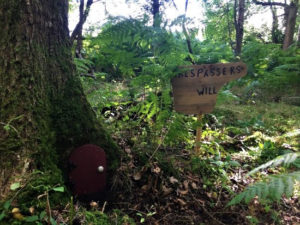 The forest consists of only about 40% wooded area with stands of birch, oak, pine, and beech with alder and willow along stream beds. The largest area, around 55%, is lowland heath comprised largely of bell heather, gorse, lichens, and bracken, a large, coarse fern. The remainder is taken up largely with bogs in the low valleys.
The forest consists of only about 40% wooded area with stands of birch, oak, pine, and beech with alder and willow along stream beds. The largest area, around 55%, is lowland heath comprised largely of bell heather, gorse, lichens, and bracken, a large, coarse fern. The remainder is taken up largely with bogs in the low valleys.
As a public common, the forest was used for grazing and other communal uses. After World War II, the entire forest was in pretty bad shape from over-use. A conservatorship was established in 1947, and since then, the forest has recovered with a resurgence of wildlife including one of Britain’s scarcest birds the Dartford Warbler.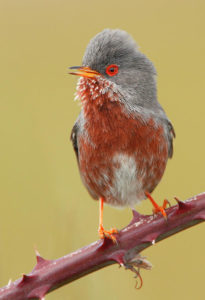
Ashdown is popular with walkers and has two long distance paths, the Vanguard Way and Wealdway that cross it. There are also 82 miles of horse tracks.
The forest contains numerous archaeological sites, some dating back 50,000 years. While not necessarily the most ancient, there are things that many people (1.5 million each year) come to see:
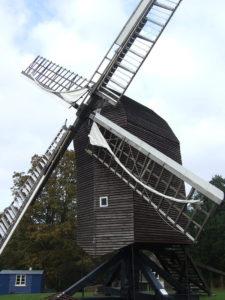 Nutley Windmill is roughly 300 years old and is a rare open trestle post mill which means that rather than just the sails, the entire building can rotate to catch the best wind.
Nutley Windmill is roughly 300 years old and is a rare open trestle post mill which means that rather than just the sails, the entire building can rotate to catch the best wind.
Newbridge Furnace is a largely grassed over site with the remains of an ironworks from the 1400’s, commissioned by Henry VII. It was the first blast furnace in the nation and, though small, was the birthplace of Britain’s iron and steel industry.
Hunters in the 1200,s created a pale in Ashdown Forest. This 24-mile-long 4-5 foot-tall earth embankment with side ditches, oak palings, and 34 gates was designed to allow deer to get in but kept them from getting out. This made hunting easy, like “shooting fish in a barrel.”
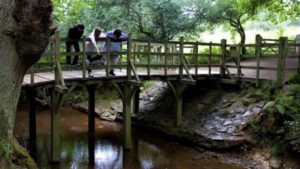 There are direct correlations between spots in the forest and those mentioned in the Winnie-the-Pooh stories such as Galleon’s Lap, Six Pine Trees, and even an old walnut tree that became Pooh’s House. Thousands come to visit the Pooh Sticks Bridge and drop a twig in the stream below. Should you venture there, be sure to bring your twig from elsewhere. The ground is picked clean.
There are direct correlations between spots in the forest and those mentioned in the Winnie-the-Pooh stories such as Galleon’s Lap, Six Pine Trees, and even an old walnut tree that became Pooh’s House. Thousands come to visit the Pooh Sticks Bridge and drop a twig in the stream below. Should you venture there, be sure to bring your twig from elsewhere. The ground is picked clean.
The Animals
Most of the characters in the Winnie-the-Pooh stories were based on the imaginary adventures of Christopher Milne’s childhood toys. Pooh, originally named Edward Bear, was a gift on his first birthday. The bear’s later name came from Christopher seeing a London Zoo bear named Winnie that had come from Winnipeg in Canada. Eyeore was Christopher’s first Christmas present. Piglet was another very early toy, but his exact origin is unknown. Kanga, Roo, and Tigger came slightly later. Owl and Rabbit are purely fictitious or were perhaps based on animals that Alan Milne and his son had seen in the forest.
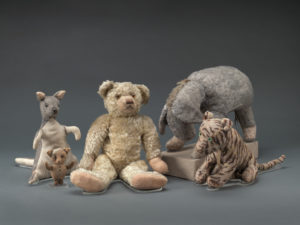 Shepard’s illustrations for the Winnie-the-Pooh characters were drawn largely from these toys as well. The exception is Pooh who was modeled after his own son’s bear, Growler. Unfortunately, Growler no longer exists having been ripped apart by a neighbor’s dog.
Shepard’s illustrations for the Winnie-the-Pooh characters were drawn largely from these toys as well. The exception is Pooh who was modeled after his own son’s bear, Growler. Unfortunately, Growler no longer exists having been ripped apart by a neighbor’s dog.
With the exception of Growler, most of the original toys have survived and can be visited at the New York Public Library.
Adaptations
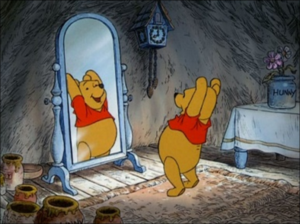 Walt Disney began attempts to acquire film rights to Winnie-the-Pooh as early as 1938 and eventually got them in 1961. An animated short Winnie the Pooh and the Honey Tree made its big screen debut in 1966. Other shorts followed. In 1977, the shorts were combined and the holes filled in to create a full-length feature film, The Many Adventures of Winnie the Pooh.
Walt Disney began attempts to acquire film rights to Winnie-the-Pooh as early as 1938 and eventually got them in 1961. An animated short Winnie the Pooh and the Honey Tree made its big screen debut in 1966. Other shorts followed. In 1977, the shorts were combined and the holes filled in to create a full-length feature film, The Many Adventures of Winnie the Pooh.
Since then, Disney has produced films of varying lengths, most far from the content of the Milne books. The Winnie the Pooh franchise has expanded to include plush toys, games, clothing and an estimated 700 million book with original Disney content sold annually worldwide. In 2013, Variety claimed that it was the third best-selling franchise worldwide, just below the Disney Princesses and Star Wars.
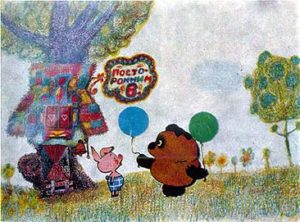 On the other side of the globe, the Soviet film company Soyumiltfilm came out with their version of Winnie-the-Pooh (Vinni-Pukh) directed by Fyodor Khitruk in 1969. It was the first of a trilogy, followed by Winnie-the-Pooh Pays a Visit in 1971, and Winnie-the-Pooh and a Busy Day in 1972.
On the other side of the globe, the Soviet film company Soyumiltfilm came out with their version of Winnie-the-Pooh (Vinni-Pukh) directed by Fyodor Khitruk in 1969. It was the first of a trilogy, followed by Winnie-the-Pooh Pays a Visit in 1971, and Winnie-the-Pooh and a Busy Day in 1972.
The Soviet films roughly followed Milne’s stories with one notable exception. Christopher Robin was removed to eliminate a superior ruling force and make all the characters equals.
Favorite A. A. Milne Quotes
- You are braver than you believe, stronger than you seem, and smarter than you think.
- The third-rate mind is only happy when it is thinking with the majority. The second-rate mind is only happy when it is thinking with the minority. The first-rate mind is only happy when it is thinking.
- There are some people who begin the Zoo at the beginning, called WAYIN, and walk as quickly as they can past every cage until they get to the one called WAYOUT, but the nicest people go straight to the animal they love the most, and stay there.
- Time is swift, it races by; Opportunities are born and die… Still you wait and will not try – A bird with wings who dares not rise and fly.
- Weeds are flowers too, once you get to know them.
- Food is a subject of conversation more spiritually refreshing even than the weather, for the number of possible remarks about the weather is limited, whereas of food you can talk on and on and on.
- What I say is that, if a man really likes potatoes, he must be a pretty decent sort of fellow.
DISCUSSION QUESTIONS
- It is often said that childhood today is different than it was in the past. After reading this book, what do you think Milne would say about your childhood? What about your children’s?
- For a bear with very little brain, Pooh says some profound stuff. Is he really as vacant as described?
- Friendship is an important theme in Winnie-the-Pooh. Are the relationships among the characters in this book realistic? Do they remind you in any way of your friendships? What can you learn about friendship from their examples?
- All children engage in pretend play when they’re young. Biologists and psychologists tell us that play is an important way that children learn about the world—from how things work to how to interact in social situations. What do you think Christopher Robin learned during his play with the animals in the Hundred Acre Wood?
- Winnie-the-Pooh is actually pretty complicated. How do you think children respond to the irony and humor? Do they get it? Do they need to?
- What books would you have read to Pooh when he was stuck in the hole?
- Each of characters certainly have their quirks. Do you think you’re more like Pooh, Eeyore, Owl, Piglet, Rabbit, or Christopher Robin? Why? What would your friends say?
- Piglet says, “The things that make me different are the things that make me, me.” What makes you, you?
- Pooh says, “Some people care too much. I think it’s called love.” Is it possible to care too much?
Download the Reader’s Guide
(PDF Download)
Regular Hours of Operation
- Monday: 9:00 am – 6:00 pm
- Tuesday - Wednesday: 9:00 am – 8:00 pm
- Thursday: 11:00 am – 8:00 pm
- Friday: 10:00 am – 6:00 pm
- Saturday: 10:00 am – 2:00 pm
- Sunday: CLOSED
Closures in 2025
- January 1 – New Year’s Day
- January 20 – Martin Luther King, Jr., Day
- February 17 – Presidents Day
- March 28 – Staff Development Day
- April 5 – Building Maintenance
- May 24-26 – Memorial Day
- June 19 – Juneteenth
- July 4-5 – Independence Day
- August 30-September 1 – Labor Day
- September 19 – Staff Development Day
- October 4 – Building Maintenance
- October 31 – Open from 9:00 am to 6:00 pm
- November 11 – Veterans Day
- November 26 – Closing at 5:00 pm
- November 27-29 – Thanksgiving
- December 24-26 – Christmas
- December 31 – New Year’s Eve
- January 1, 2026 – New Year’s Day
Address
73 North Center
Rexburg, Idaho 83440
We are located on Center Street, just north of Main Street, by the Historic Rexburg Tabernacle.
Contact Us
(208) 356-3461
24 Hour Phone Renewal: (208) 356-6658
askmadisonlibrary@madisonlib.org

